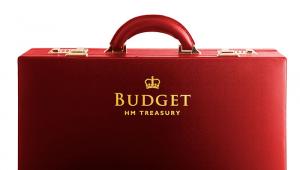In a review of the government’s Spending Review and Autumn Statement, MPs on the cross-party committee said the improvements to the fiscal forecast were driven not by an improved economic outlook but changes to the Office for Budget Responsibility's modelling and assumptions.
Osborne used the £27bn funding boost to cancel planned tax credit cuts and limit departmental cuts to an average of 19%, down from as much as 40% originally indicated.
Committee chair Andrew Tyrie said that modelling changes had given the chancellor a fiscal windfall at the Autumn Statement.
But he warned that what the OBR had provided in the last set of forecasts it may decide to remove in the next.
“If that were to happen, given the inflexibility of his fiscal rule, the chancellor would have to raise taxes, cut spending, or abandon the rule.”
He highlighted that the new fiscal rule, which is intended to ensure a public finance surplus when the economy is growing at 1% or more, could be at risk.
He added: “Successive governments have committed themselves to, but then failed to meet their fiscal rules and targets,” Tyrie highlighted. “This rule looks no less vulnerable than the others from successive governments over the past thirty years.”
The committee criticised the focus on the £27bn cumulative change over the five-year forecast period because the annual improvements were of a small scale that could be revised away in the future. “What was widely interpreted as a windfall may well prove illusory,” the report stated.
The report also highlighted that the tax burden in the economy, which stood at 33% of gross domestic product in 2014/15 would rise to 34.2% in 2017/18, despite Osborne’s objective to move to a “lower tax society”.
The need to raise further tax revenues is understandable, given the requirements to cut borrowing, but Tyrie warned that the “tax lock”, which prevents increases in National Insurance, income tax and VAT, appeared to be leading the Treasury to raise revenues in less conventional ways.
“The apprenticeship levy, the stamp duty surcharge, and increases to insurance premium and dividend taxation, are cases in point,” he stated.
“The tax lock, in time, could distort the shape of the tax base.”












